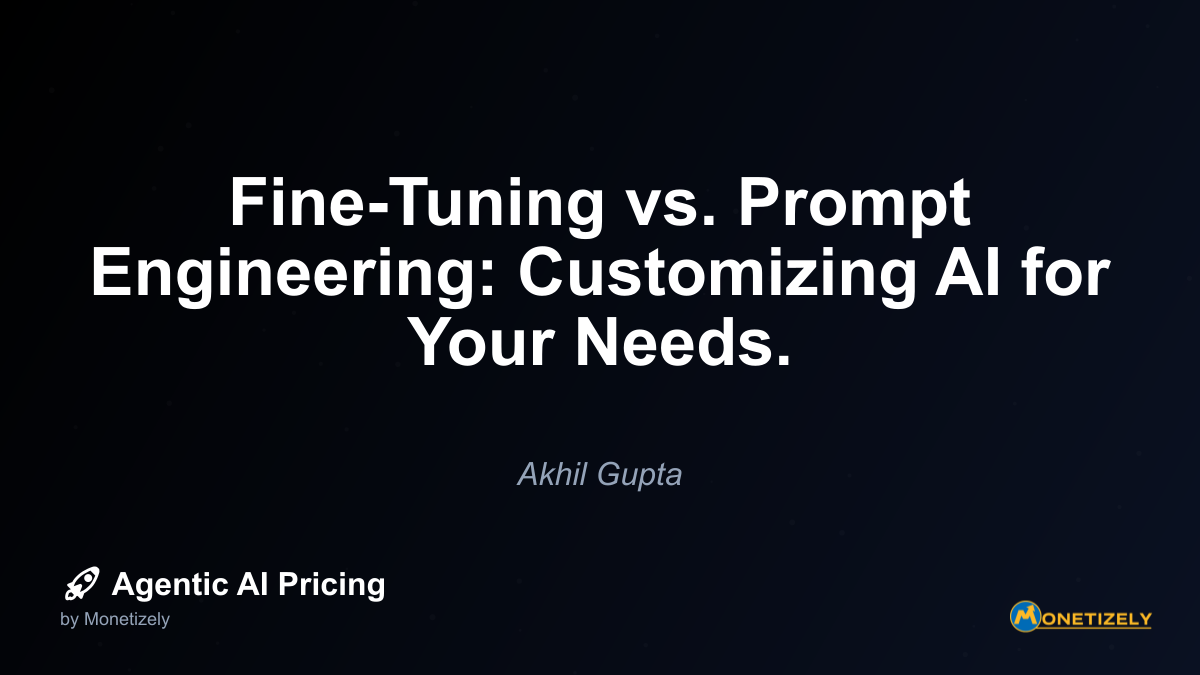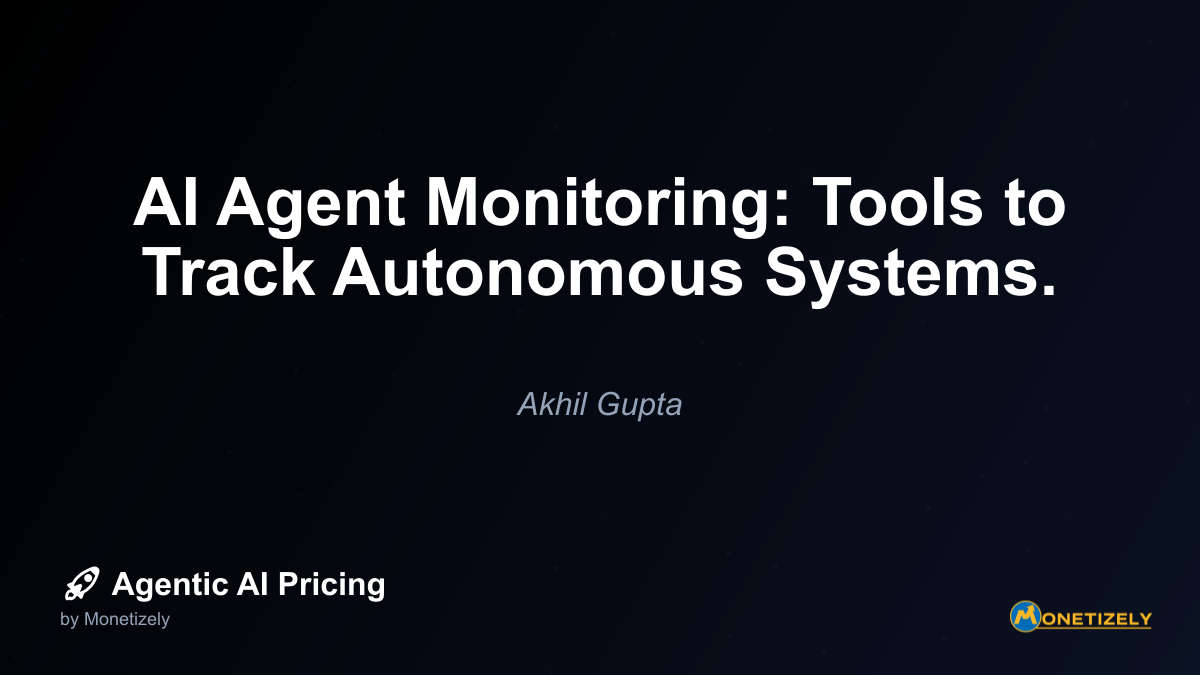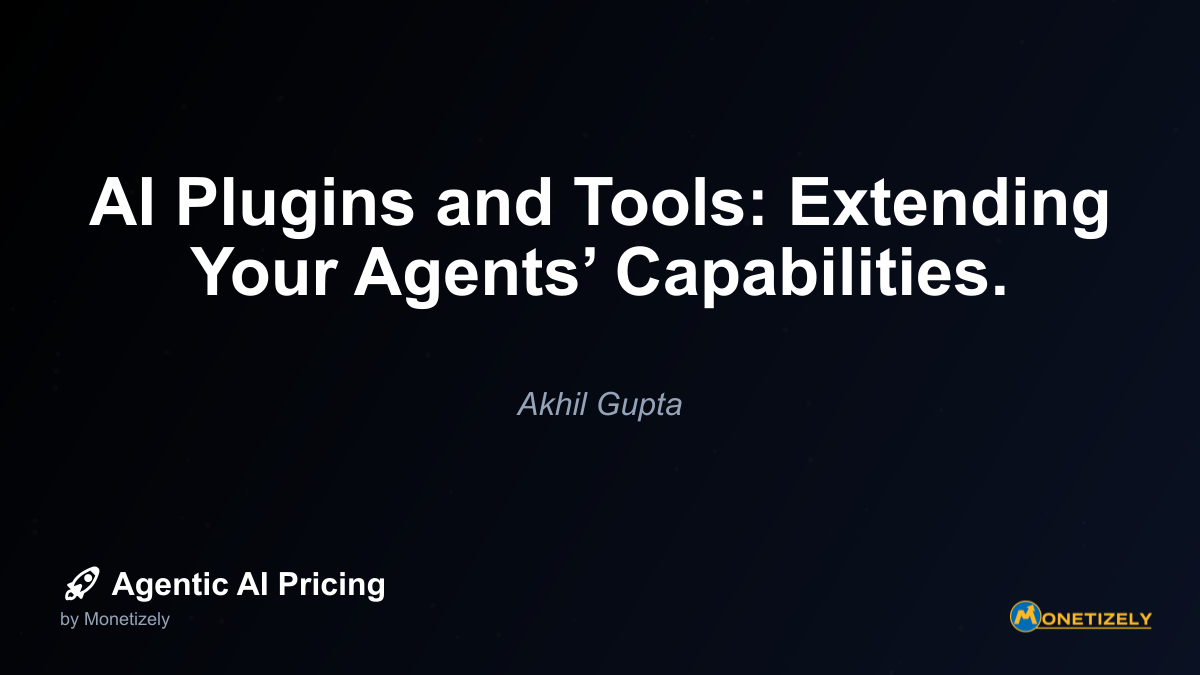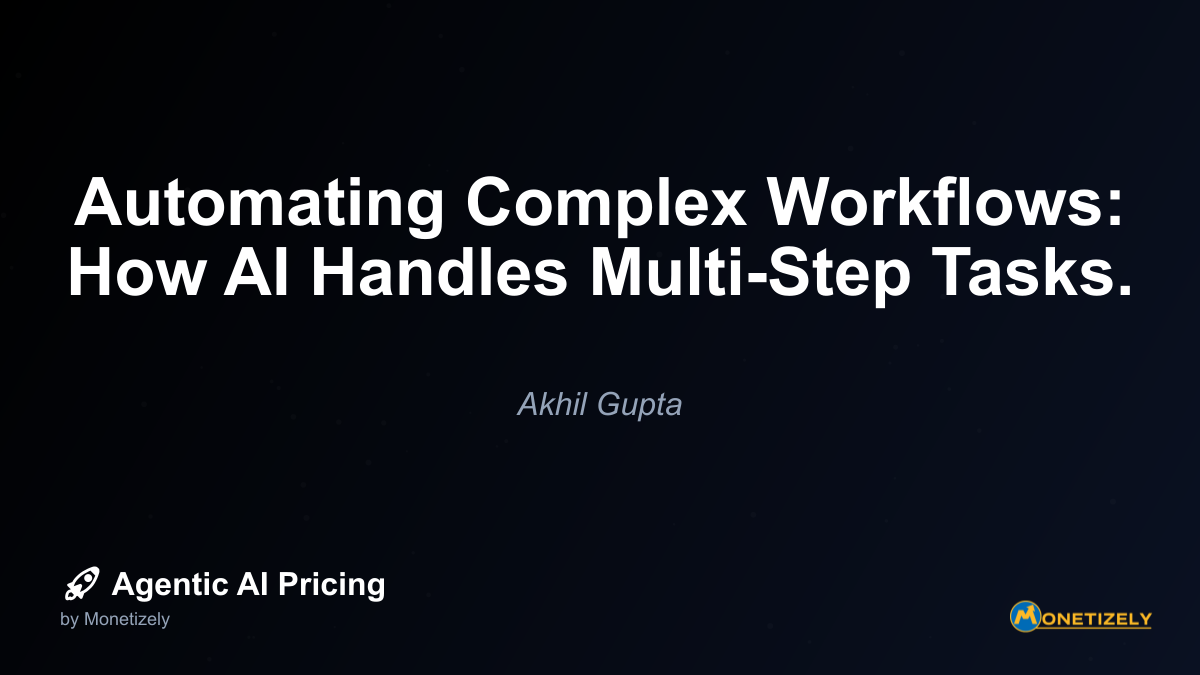· Ajit Ghuman · Technical Insights · 7 min read
Prompt Libraries: Streamlining AI Task Design.
AI and SaaS Pricing Masterclass
Learn the art of strategic pricing directly from industry experts. Our comprehensive course provides frameworks and methodologies for optimizing your pricing strategy in the evolving AI landscape. Earn a professional certification that can be imported directly to your LinkedIn profile.
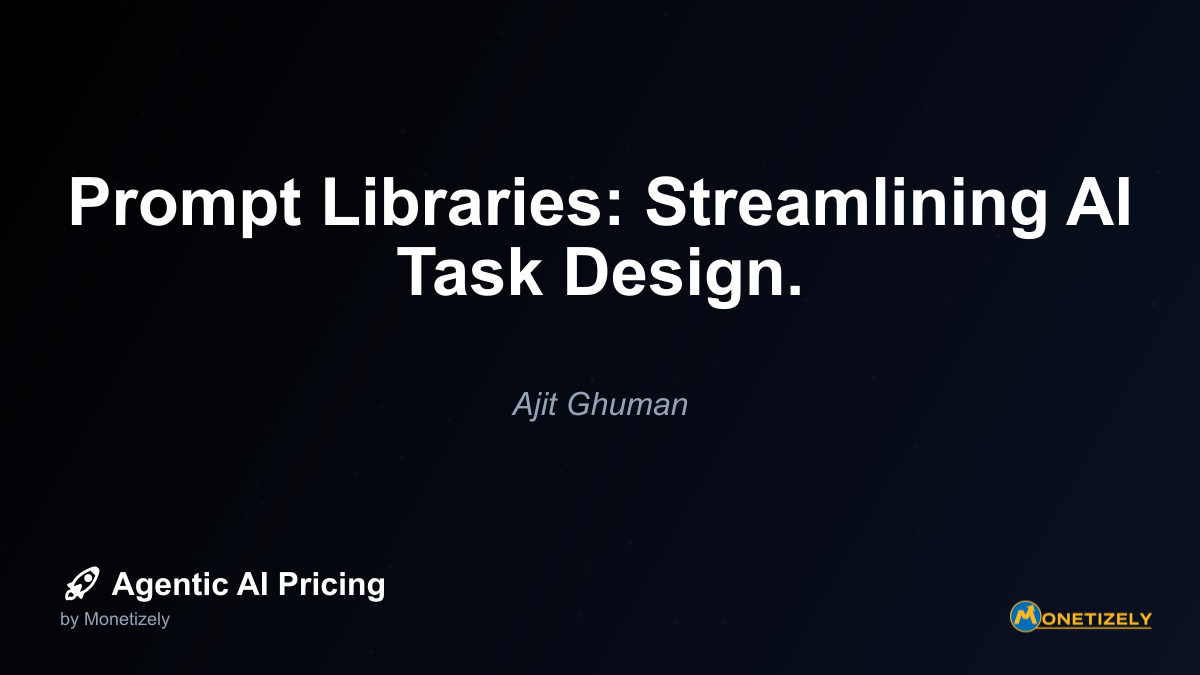
Integrating Prompt Libraries into Business Workflows
The true value of prompt libraries emerges when they’re seamlessly integrated into existing business processes. Successful implementations typically follow these patterns:
Embedding in Development Environments
Many organizations integrate prompt libraries directly into their development environments. This might include:
- IDE plugins that suggest relevant prompts
- Development frameworks with built-in prompt management
- Testing tools that validate prompt effectiveness
This integration makes it natural for developers to leverage existing prompts rather than creating new ones unnecessarily.
Creating User-Friendly Interfaces
For non-technical users, organizations often develop interfaces that abstract away the complexities of prompt engineering. These might include:
- Web portals with searchable prompt collections
- Wizard-like interfaces that help users customize templates
- Integration with familiar tools like Microsoft Office or Google Workspace
These interfaces democratize access to AI capabilities across the organization.
Establishing Governance Frameworks
As prompt libraries grow in importance, governance becomes essential. Effective governance typically includes:
- Clear ownership and maintenance responsibilities
- Quality standards for prompt inclusion
- Review processes for new additions
- Monitoring systems to track usage and effectiveness
Strong governance ensures that prompt libraries remain valuable assets rather than becoming outdated or unreliable.
Common Use Cases for Prompt Libraries
While prompt libraries can support virtually any AI interaction, certain use cases have emerged as particularly common and valuable:
Customer Interaction Templates
Many organizations begin with prompts focused on customer interactions, including:
- Frequently asked questions
- Troubleshooting guides
- Product recommendations
- Complaint handling
These templates often draw on existing customer service scripts and knowledge bases, translated into effective prompts.
Content Generation Frameworks
Content creation represents another common starting point, with prompts for:
- Marketing copy in various formats
- Technical documentation
- Internal communications
- Social media posts
These prompts typically include brand voice guidelines and content standards to ensure consistency.
Data Analysis Patterns
Organizations with data-intensive operations often develop prompts for:
- Standard report generation
- Anomaly detection
- Trend identification
- Data summarization
These analytical prompts help democratize access to insights across the organization.
Process Automation Scripts
For workflow automation, prompt libraries might include templates for:
- Email triage and response
- Document processing and extraction
- Meeting summarization
- Task prioritization
These automation prompts often integrate with existing business process management systems.
Best Practices for Developing Your Prompt Library
Organizations building their first prompt libraries should consider these proven approaches:
Start with High-Value, Well-Defined Tasks
Begin by identifying tasks that:
- Occur frequently across the organization
- Have clear inputs and desired outputs
- Currently require significant manual effort
- Would benefit from consistency and standardization
These characteristics make a task ideal for early inclusion in a prompt library.
Implement Systematic Testing
Effective prompt development requires rigorous testing, including:
- Comparison of multiple prompt variations
- Testing with diverse inputs
- Validation against established quality metrics
- User feedback on real-world effectiveness
This testing process should be standardized and documented to ensure consistency.
Create Clear Contribution Guidelines
If you’re adopting a community-based or hybrid development model, establish clear guidelines for contributions:
- Required documentation elements
- Quality standards and testing requirements
- Review and approval processes
- Attribution and recognition mechanisms
These guidelines help maintain quality while encouraging broad participation.
Plan for Continuous Improvement
Recognize that prompt engineering is an evolving discipline:
- Schedule regular reviews of library contents
- Monitor AI platform updates that might affect prompt effectiveness
- Collect usage statistics to identify high-value prompts
- Create feedback channels for users to report issues or suggest improvements
This continuous improvement cycle ensures your prompt library remains valuable as technology and business needs evolve.
Challenges in Prompt Library Implementation
Despite their benefits, prompt libraries present several challenges that organizations must address:
Balancing Standardization and Customization
The most valuable prompt libraries strike a delicate balance between standardization (which promotes consistency and efficiency) and customization (which addresses specific business needs). Finding this balance requires:
- Clear distinction between core elements and customizable components
- Guidelines for appropriate customization
- Mechanisms to capture valuable customizations for potential inclusion in the standard library
Organizations that lean too far toward either extreme diminish the library’s value.
Maintaining Quality at Scale
As prompt libraries grow, quality management becomes increasingly challenging:
- Large libraries become difficult to review comprehensively
- Inconsistencies can develop between different sections
- Outdated prompts may persist alongside newer alternatives
- Cross-dependencies between prompts create maintenance challenges
Addressing these challenges requires robust governance and systematic review processes.
Adapting to Evolving AI Capabilities
AI systems evolve rapidly, sometimes rendering existing prompts less effective:
- New capabilities may enable more sophisticated approaches
- Changes to underlying models can affect prompt performance
- Best practices evolve as the community gains experience
Organizations must develop mechanisms to keep their libraries current with technological advances.
Managing Knowledge Transfer
For prompt libraries to deliver maximum value, knowledge must flow effectively:
- New users need effective onboarding to the library
- Successful implementation patterns should be documented and shared
- Lessons from failures should inform library improvements
- Cross-functional insights should influence prompt development
Creating these knowledge flows requires intentional effort and appropriate organizational structures.
Future Trends in Prompt Libraries and Templates
The field of prompt engineering and library development continues to evolve rapidly. Several emerging trends suggest where the discipline is heading:
Automated Prompt Generation and Optimization
As AI capabilities advance, we’re seeing the emergence of systems that can:
- Generate initial prompts based on task descriptions
- Optimize prompts through automated testing
- Identify patterns in successful prompts
- Suggest improvements to existing prompts
These capabilities promise to accelerate prompt development and improve quality.
Integration with Traditional Software Development
Prompt engineering is increasingly being integrated with conventional software development:
- Version control systems adapted for prompt management
- CI/CD pipelines that include prompt testing
- Development methodologies that accommodate prompt iteration
- Software design patterns that incorporate prompt-based components
This integration helps organizations manage prompts with the same rigor they apply to other code assets.
Industry-Specific Libraries
While early prompt libraries tended to be general-purpose, we’re now seeing the emergence of specialized libraries for specific industries:
- Healthcare-specific prompt collections addressing clinical workflows
- Financial services libraries focused on compliance and risk management
- Educational prompts designed for different learning contexts
- Manufacturing templates for quality control and process optimization
These specialized libraries incorporate domain knowledge that generic collections lack.
Collaborative Development Ecosystems
Beyond individual organizational libraries, broader ecosystems are emerging:
- Open-source prompt collections for common tasks
- Industry consortia developing shared standards
- Marketplace models for prompt exchange
- Collaborative improvement platforms
These ecosystems accelerate innovation and raise quality standards across the field.
How to Get Started with Prompt Libraries
For organizations looking to develop their first prompt library, these steps provide a practical starting point:
1. Audit Existing AI Interactions
Begin by cataloging how your organization is already using AI:
- Identify current use cases and interaction patterns
- Document existing prompts and their effectiveness
- Note common challenges and failure modes
- Recognize opportunities for standardization
This audit establishes a baseline and helps identify priority areas for library development.
2. Define Your Library Structure
Before adding prompts, establish the organizational framework:
- Determine categorization schemes (by function, department, complexity, etc.)
- Define required metadata for each prompt
- Establish naming conventions and versioning approaches
- Create templates for prompt documentation
This structure will make your library more navigable and maintainable as it grows.
3. Develop Initial High-Value Templates
Start with a small set of high-impact prompts:
- Choose use cases with clear success criteria
- Focus on frequently performed tasks
- Select areas where consistency is particularly important
- Target processes where current approaches show significant variation
These initial templates demonstrate the library’s value while keeping the scope manageable.
4. Implement Feedback and Improvement Cycles
From the beginning, establish mechanisms for continuous improvement:
- Create simple ways for users to provide feedback
- Track performance metrics for each prompt
- Schedule regular reviews of library contents
- Develop processes for testing and validating improvements
These cycles ensure your library remains valuable as needs and technologies evolve.
5. Expand Gradually with Clear Governance
As you demonstrate success, expand your library methodically:
- Establish clear criteria for adding new prompts
- Define ownership and maintenance responsibilities
- Create processes for retiring outdated prompts
- Develop training for new users of the library
This governance framework supports sustainable growth without sacrificing quality.
Conclusion
Prompt libraries represent a significant advancement in how organizations implement AI solutions. By centralizing knowledge about effective AI interactions, these libraries accelerate deployment, ensure consistency, and capture institutional learning. They transform prompt engineering from an individual art to an organizational capability.
As AI becomes increasingly central to business operations, the ability to systematically develop and maintain effective prompts will become a critical competitive advantage. Organizations that invest in robust prompt libraries now are positioning themselves to leverage AI more effectively across their operations.
The journey toward comprehensive prompt libraries is iterative and ongoing. By starting with high-value use cases, establishing clear governance, and creating mechanisms for continuous improvement, organizations can build libraries that deliver immediate benefits while evolving with technological advances and changing business needs.
For businesses implementing agentic AI solutions, prompt libraries aren’t just a convenience—they’re a strategic asset that enables faster innovation, more consistent user experiences, and more effective leveraging of AI capabilities across the enterprise.
Co-Founder & CEO
Ajit is the author of Price To Scale, a top book on SaaS Pricing and is the Founder of Monetizely. Ajit has led and worked in pricing and product marketing at firms like Twilio, Narvar and Medallia. His work has been featured in Forbes and VentureBeat. Ajit regularly consults with software companies from Seed stage to post-IPO on pricing strategy. Ajit is also a highly-rated co-instructor for 'The Art of SaaS Pricing and Monetization' on Maven.
Pricing Strategy Audit
Let our experts analyze your current pricing strategy and identify opportunities for improvement. Our data-driven assessment will help you unlock untapped revenue potential and optimize your AI pricing approach.

